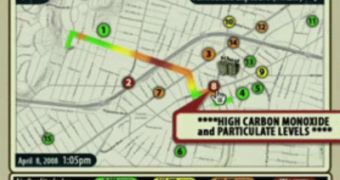After being more than once at the forefront of the environment-friendly side of the mobile industry, Nokia obviously continues to have green intentions, and the new PEIR concept is here to prove it. Developed by Nokia Research Center Palo Alto and UCLA (the University of California, Los Angeles), PEIR is a revolutionary tool that can measure users' impact on the environment, directly from their mobile phones.
PEIR, an acronym for Personal Environmental Impact Report, seems to be some kind of software that uses the multitude of sensors packed in today's mobile devices. The software is capable of collecting speed and location information that is correlated with Geographic Information System data. This way, an individual's environmental exposure and impact can then be visualized online.
PEIR is currently showcased at the Chicago WIRED NextFest event, held between September 27 and October 12, so, if you happen to be around, don't hesitate to drop by.
“PEIR is a completely new concept, which introduces a dimension of intelligence and new depth in comparison with the traditional carbon footprint calculators. It demonstrates novel capabilities by providing the user with personal information based on their lifestyle with details on how their daily behavior patterns affect the environment and the way it impacts them”, declared Péter Boda, who leads Nokia's PEIR research collaboration with UCLA.
Head of Systems Research in Nokia Research Center Palo Alto, Henry Tirri, also said, “PEIR is an exciting development which very clearly demonstrates the capability for mobile devices to act as gateways between the physical worlds in which we live, and the virtual information spaces that connect us. Additionally, PEIR has the capability to empower individuals and communities to act and influence others to act on the urgent environmental issue. Appearing at the WIRED NextFest is proof of such capability.”
In order to make users better understand the PEIR concept, the UCLA has uploaded a video on YouTube, which you can also check out below:

 14 DAY TRIAL //
14 DAY TRIAL //